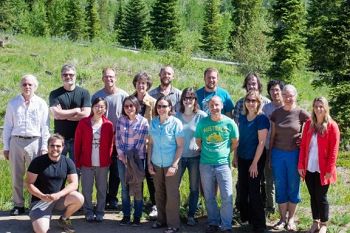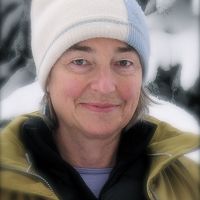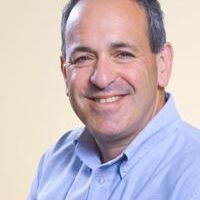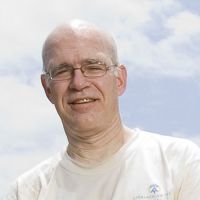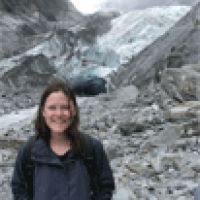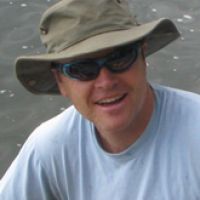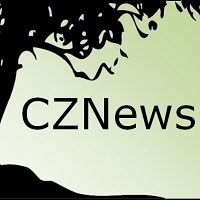CZNews: Fall 2015
Print Verison: CZNews - Fall 2015 (1 MB PDF)
CZOs Welcome Richard Yuretich as Program Director
The CZO National Office would like to introduce and welcome Richard Yuretich as the new CZO Program Director in the Division of Earth Sciences at the National Science Foundation. Regarding his new role in the CZO community, Richard expressed the following: “I am eager to see the growth of multi-disciplinary collaboration in critical-zone science and the development of comprehensive knowledge of the governing processes. These latter aspects I see as the real benefit to Earth Sciences that will engender a longer-term research effort involving ecologists and atmospheric scientists to unravel the workings of the Earth’s surface.” The CZOs will benefit from Richard’s involvement with: research within the CZ; interdisciplinary projects; and, his advocacy for education research. He also brings experience from his current role as program director of the Dynamics of Coupled Natural and Human Systems (CNH) program.
Prior to his role at NSF, Richard was a professor in the Department of Geosciences at University of Massachusetts-Amherst for over 30 years and co-director of their Environmental Science Program. He received his Ph.D. in geology from Princeton University, where he studied the modern environment of Lake Turkana in northern Kenya. His research largely involved the geochemistry of natural waters; his early work looked at element cycling in the hydrosphere and reactions in the weathering zone that influenced groundwater and watershed geochemistry. Prior to NSF, he explored the biogeochemistry of acid-mine drainage, specifically looking at ways to stimulate the natural population of sulfate-reducing microorganisms to reverse the problem with minimal human intervention. We look forward to working with Richard to advance and broaden the CZO community!
CZO participation at the LTER triennial meeting
August 30 – September 2, 2015
As part of an effort led by the CZO Science Across Virtual Institutes program to establish stronger ties with other Earth surface and environmental science networks in the U.S. and abroad, several CZO affiliated personnel attended the most recent meeting of the Long Term Ecological Research network in Estes Park, CO. The CZO presence included: 1) an introductory “lightning” talk, two slides in two minutes, by Dan Richer, Calhoun PI and CZO PI 2015 committee chair, during an opening session on Sunday evening in which all of the LTER sites presented similarly; 2) a poster entitled “Critical Zone Observatories: Studying the zone where rock meets life (through collaboration with the LTER network)” by Tim White and Sarah Sharkey (Penn State, CZO National Office and SAVI program); 3) a 4-hour working group session led by Bill McDowell (Luquillo PI), Dan Richter, Peter Groffman (CZO Steering Committee), and Tim White in which 38 participants discussed various avenues of collaboration between the two networks and specific scientific questions to be considered; and, 4) a presentation by Dan Richter to a business meeting of all the LTER site PIs. Overall, the CZO presence was a success and established some important ties to the ecological community moving into 2016.
2015 Events
• CZO Workshop (Guiyang, China): October 6 - 11
• Critical Zone Science, Sustainability, and Services in a Changing World (Purdue): October 22 – 24
• GSA (Baltimore, MD) November 1 - 4 :
• T202: Resurrecting Ancient Critical Zones
• CO microbial ecology workshop (Argonne NL): November 16 - 18
• International CZO meeting at AGU: December 13
CZO Spotlight: Measuring the Critical Zone
The manuscript, “Designing a Suite of Measurements to Understand the Critical Zone,” by Brantley et al. (2015) details the methodology behind scaling up from measuring “everything everywhere” at the Susquehanna Shale Hills CZO to measuring “only what we need” in the greater Shavers Creek watershed. This expansion is from a monolithologic first-order forested catchment to the broader watershed that encompasses several lithologies (shale, sandstone, limestone) and land use types (forest, agriculture, rural residential). Study of the CZ requires prioritizing among the measurements that can be made – and the scientific community does not generally agree on the priorities. The authors describe a strategy of data collection and modelling based on a geomorphological framework that builds on hillslopes as the basic unit. They hypothesize that pinpointed measurements of a few important variables at strategic locations will allow development of predictive models of CZ behavior. This paper is now open for online public discussion at the journal Earth Surface Dynamics until October 29, 2015, and is available at the following link, along with the manuscript and supplementary material: http://www.earth-surf-dynam-discuss.net/3/1005/2015/.
CZO Research Experience for Undergraduates and Teachers
This past summer, 12 students and four teachers spent nine weeks engaged in CZ science at the Shale Hills CZO with Penn State University, and at the Stroud Water Research Center, as part of NSF’s Research Experiences for Undergraduates (REU) and Teachers (RET) program. Starting with a nine-day orientation, participants focused on making interdisciplinary connections among Earth’s litho-, hydro-, atmo-, and bio- spheres to better understand the CZ concept. They then worked alongside CZO scientists on topics including root density, microbial distribution in streams, geomorphic mapping, TDR anaylsis, sediment deposition in eroded stream banks, and iron reducing bacteria. Teachers also created a virtual field experience for the Shale Hills CZO and held a teacher workshop focused on the CZ. Their summer culminated by attending and presenting posters at the annual meeting of the Ecological Society of America in Baltimore, Maryland. Presentations and posters were also showcased at a Summer Research Symposium held at the Stroud Center. All final projects are available online at czo.stroudcenter.org/reu.
Salon on the Architecture and Evolution of the Deep Critical Zone
If soils are “the final frontier”, as characterized in a 2004 Science magazine special issue, then the depths of the critical zone below soil are terra incognita, almost completely unknown. A cross-CZO working group salon, hosted by Boulder Creek CZO, was held at Snow Mountain Ranch, Granby, Colorado on June 15-18. The workshop organizers were Suzanne Anderson, Daniella Rempe, Nikki West, and Sue Brantley. A group of 17 researchers gathered to provide datasets that illuminate critical zone architecture with the goal of understanding how weathering fronts advance. Attendees were from seven US CZOs and non-CZO sites in western Australia, Oregon, Wyoming, Virginia, and Colorado. Datasets presented were primarily sample-based geochemical and physical characterization, and geophysical surveys. A need was recognized for geophysics and sample-based analyses collected from the same transect preferably with joint planning of data collection. CZ architecture was also recognized to be a product of processes that shape topography: movement and action of water and biota, connections between hillslopes and rivers, and the influence of inherited structure, lithology, and stress states from geologic history. An abstract was submitted to the Fall AGU meeting based on discussions from the meeting (Anderson and 15 others, “Seeking GUTH, the Grand Unified Theory of Hillslopes: Linking weathering, erosion and landscapes”), and a joint manuscript is tentatively planned for Annual Reviews in Earth and Planetary Science is in preparation.
CZNews
Receive the CZO Email Newsletter
Occasional email will include news, events, and other info related to Critical Zone Observatories.
We hate spam as much as you do, so your information will never be shared. You can unsubscribe at any time.
Richard Yuretich of NSF
The Long Term Ecological Research (LTER) Network Logo
Shale Hills. Soil lysimeters nests are located on the ridge top, middle slope and valley floor landscape positions along planer and swale transects on both the north and south sides of the catchment.
Christina CZO REU Kelly Shen (Duke University) presents her poster at annual ESA meeting.
Shale Hills CZO REUs Kelsey Bicknell (University of New Mexico) and Meaghan Shaw (Southern Methodist University) work at Garner Run.
Photo by Brady Flinchum.
The Critical Zone. Illustration modified from Chorover, J., R. Kretzschmar, F. Garcia-Pichel, and D. L. Sparks. 2007. Soil biogeochemical processes in the critical zone. Elements 3, 321-326. (artwork by R. Kindlimann). Image Request.
News Category:
RESEARCH |
PUBLICATIONS |
PEOPLE |
EDUCATION/OUTREACH
People Involved
CZO
-
Boulder, INVESTIGATOR
-
National, Eel, Luquillo, Shale Hills, INVESTIGATOR, COLLABORATOR
-
National, ADVISORY BOARD
-
Eel, INVESTIGATOR, COLLABORATOR
-
Calhoun, INVESTIGATOR
-
Luquillo, INVESTIGATOR
-
Shale Hills, INVESTIGATOR, COLLABORATOR
-
National, Shale Hills, INVESTIGATOR, STAFF
Explore Further

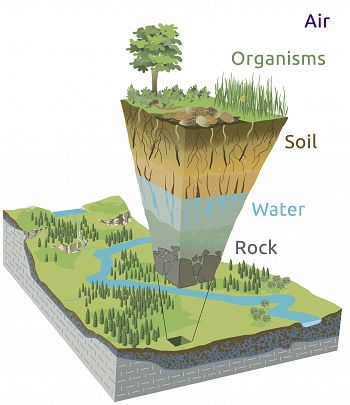
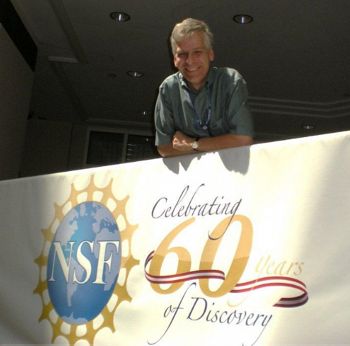
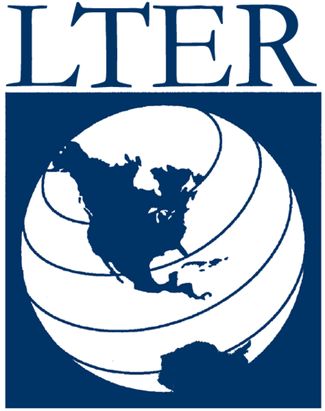
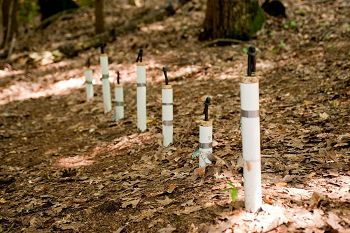
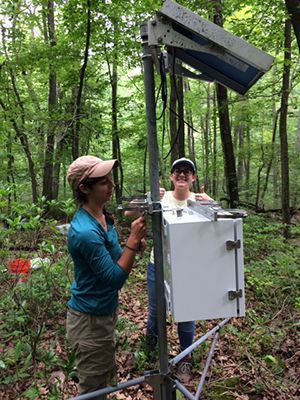
_245_327_80auto.jpg)
